Onions; Which, When, and Why
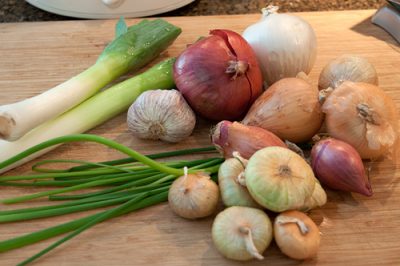
Onions, love ’em or hate ’em, they are a staple in most recipes. They add flavor and depth to most dishes. There are many different types of onions. Which one should you use? Can you substitute? How will substituting effect my dish? Let’s take a look at some of the most common onions.
Green Onions or Scallions
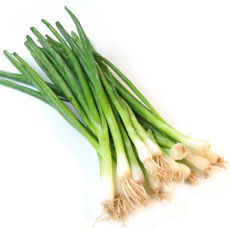 Green Onions, also known as Scallions, are mild and typically found in Asian food. You can use the entire onion, even the green leaves. Cut the leaves on the bias and use them for garnish. They are a good replacement for chives. Where else can you use Green Onions? Well, how about Salsa, Baked Potatoes, Spicy Thai noodles, stir-fries or slice them up into your scrambled eggs.
Green Onions, also known as Scallions, are mild and typically found in Asian food. You can use the entire onion, even the green leaves. Cut the leaves on the bias and use them for garnish. They are a good replacement for chives. Where else can you use Green Onions? Well, how about Salsa, Baked Potatoes, Spicy Thai noodles, stir-fries or slice them up into your scrambled eggs.
One of the benefits of Green Onions, besides the health benefits like rich in anti-oxidants, Vitamin C and chromium, they won’t make you cry when you chop them.
Do you your Green Onions end up a soggy wilted mess in the bottom of your produce drawer? Guess what? You can freeze them! Chop up what you need and freeze the rest.
Pearl Onions
 Also known as Button or Baby onions are small and sweet. Usually cooked whole. The most common are the white skinned but you will also find red and gold skinned varieties are available.
Also known as Button or Baby onions are small and sweet. Usually cooked whole. The most common are the white skinned but you will also find red and gold skinned varieties are available.
An excellent choice for stews or succotash. If presentation is important, these little beauties will be a great choice. They will look awesome nestled with other vegetables.
Peeling these onions can be a challenge so here is a little tip. Drop them into boiling water for 1-2 minutes. Drain and pat dry. Drop them into some ice water. Cut off the ends and then just squeeze and the onion will shed it’s peel.
Leeks
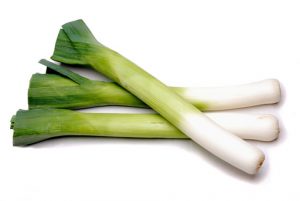 Leeks look like over grown Scallions but they are quite different. They are best sweated or sautéed. Leeks will add body to a soup or stew that other onions cannot. Leeks can also stand alone as a side dish. Roasting and grilling really bring out the flavor of Leeks and make a great accent to seafood.
Leeks look like over grown Scallions but they are quite different. They are best sweated or sautéed. Leeks will add body to a soup or stew that other onions cannot. Leeks can also stand alone as a side dish. Roasting and grilling really bring out the flavor of Leeks and make a great accent to seafood.
You should make sure that you clean Leeks thoroughly. They can get soil in between the leaves. Best to chop or slice and then wash.
Red Onions
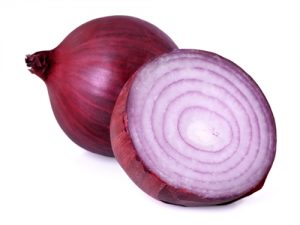 Also called Bermuda Onion, one of the best onions to use raw. Not only for the sweetness and the mild flavor, but the red color as well. Great in salads and salsas where raw onion is needed. Red Onions are low in sugar so they do not caramelize well. Not saying you shouldn’t but other onions would be better suited for caramelization. The red color also gets washed out when cooked.
Also called Bermuda Onion, one of the best onions to use raw. Not only for the sweetness and the mild flavor, but the red color as well. Great in salads and salsas where raw onion is needed. Red Onions are low in sugar so they do not caramelize well. Not saying you shouldn’t but other onions would be better suited for caramelization. The red color also gets washed out when cooked.
Onions have long been touted as healthy. Red Onions contain plenty of vitamins and minerals, including folate, thiamine, calcium, magnesium, potassium, manganese and vitamins C, K and B-6. A multi-vitamin from Mother Nature.
Red Onions do stand up well when grilled. Slice them thick. Brush with olive oil. Season with salt and pepper and grill 3-5 minutes each side.
Shallots
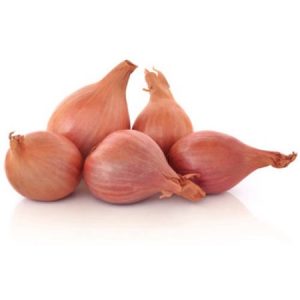 Shallots are the sweeter member of the onion family. Their mild flavor and small size make them perfect of and raw application. Typically used if the dish you are preparing is more delicate. Mild fish, sauces and even eggs would be a good use for Shallots. The delicate nature of the Shallot will not overpower dishes that are milder.
Shallots are the sweeter member of the onion family. Their mild flavor and small size make them perfect of and raw application. Typically used if the dish you are preparing is more delicate. Mild fish, sauces and even eggs would be a good use for Shallots. The delicate nature of the Shallot will not overpower dishes that are milder.
Rule of thumb when replacing Shallots and Onions (yes you can replace them, both members of the same family) is 1 small onion = 3 small shallots. Just remember that Shallots are milder than onions. but their small size makes cooking for one or two a little easier.
A great use for Shallots is sautéed with mushrooms to serve with steak. Take some baby yellow potatoes, drizzle with olive oil, mix in some Shallots, a little Parmesan and bake.
White Onions and Yellow/Brown Onions
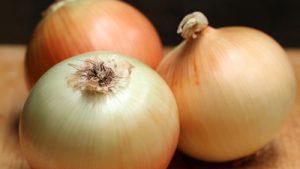 I have grouped these together because these are the go to, all purpose onion. If the recipe doesn’t specify what type of onion to use, one of these will work just fine. They all work the same with one exception. Many cooks contend that yellow onions are best to caramelize and so they are called for in a lot of classical French dishes. However, this may very well be due to the fact that they were simply the most abundant when France was establishing itself as a culinary heavyweight.
I have grouped these together because these are the go to, all purpose onion. If the recipe doesn’t specify what type of onion to use, one of these will work just fine. They all work the same with one exception. Many cooks contend that yellow onions are best to caramelize and so they are called for in a lot of classical French dishes. However, this may very well be due to the fact that they were simply the most abundant when France was establishing itself as a culinary heavyweight.
Remember, these are the onions that will make you cry the most. So, here some tips to help keep the tears away.
- Use a very sharp knife when cutting onions. …
- Chill the onions in the freezer for 10 to 15 minutes before cutting them. …
- Cut the onion under water. …
- Cut the onion near hot running water or a cloud of steam. …
- Breathe through your mouth and stick your tongue out. …
- Soak the onion in water.
You must be logged in to post a comment.